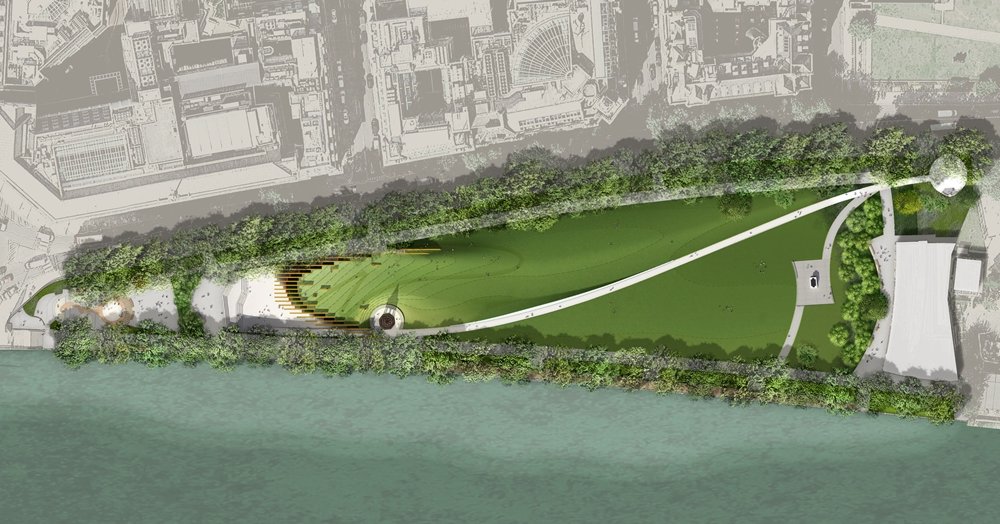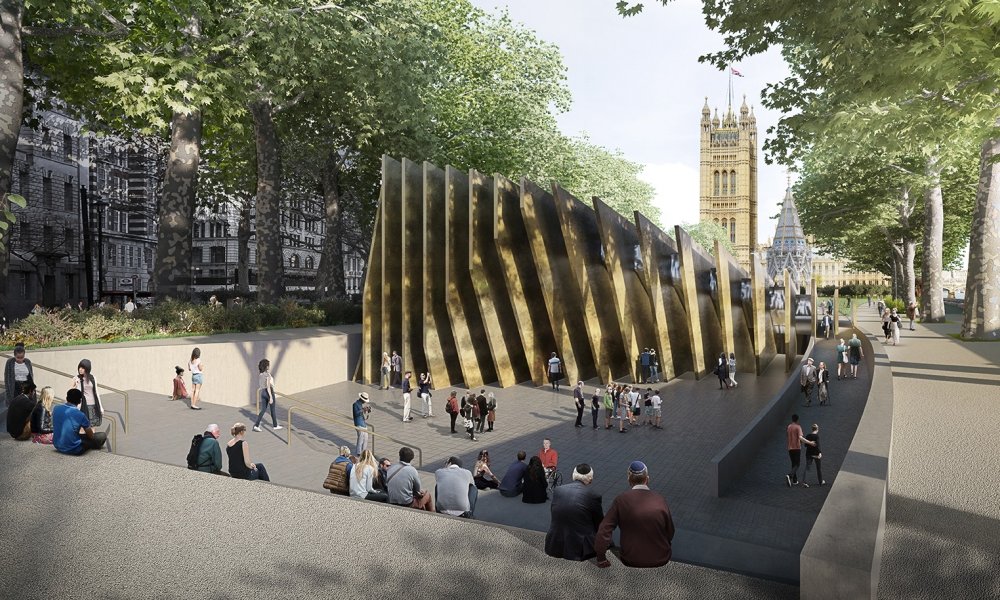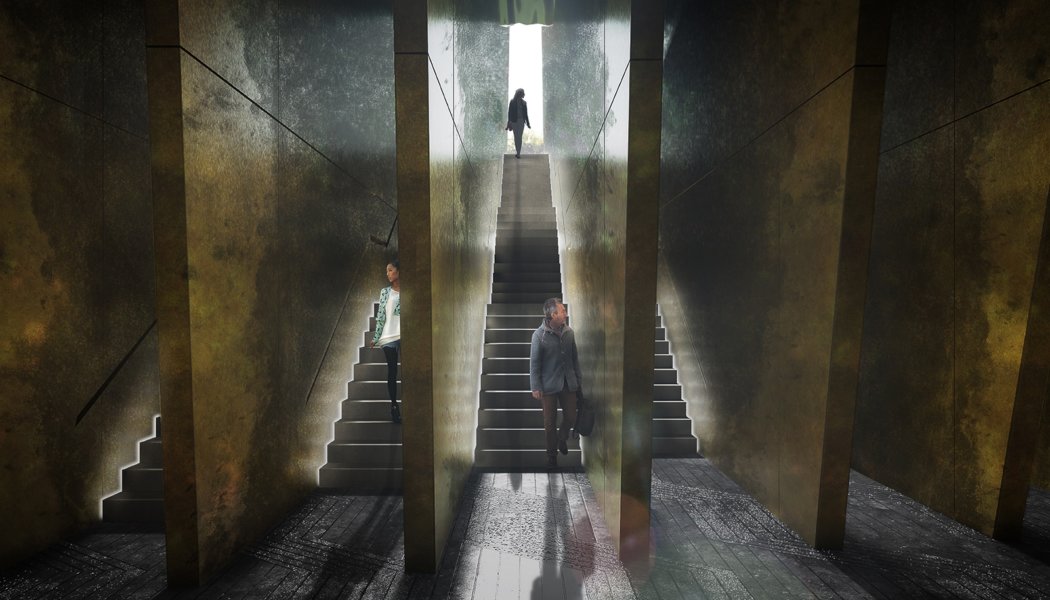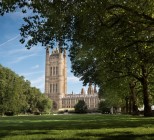Sir David Adjaye, who was part of the team that designed the Smithsonian’s National Museum of African American History and Culture in Washington DC that opened last year and the Idea Stores in London’s Tower Hamlets, has been named as the lead design for the UK’s Holocaust Memorial.
After an international competition, run by Malcom Reading Consultants, with 92 entries in total and ten finalists, Sir David will now take his plans forward to the planning stage with the project completion date set for 2021.
The new UK Holocaust Memorial, located in Grade II Listed Victoria Tower Gardens, next to the Houses of Parliament in Westminster, will not only honour the six million Jewish men, women and children who were murdered in the Holocaust but all other victims of Nazi persecution, including Roma, gay and disabled people.
Despite criticism from some Lords, Ladies and MPs about the location of the memorial (saying it would cease to be a public amenity through loss of space), the Government has committed £50m to the project with cross-party support. In addition to the government funding, the Foundation will fundraise additional contributions to deliver the National Memorial and Learning Centre and its broader educational objectives.
However, in order to keep the park as a park and to maintain the green space, the winning team placed its Holocaust Memorial at the far southern end of the Gardens, embedded in the land. Accordingly, a visitor approaching the Memorial would see a subtle grass landform with only the tips of the Memorial’s fins “bristling in the distance”, its intriguing design giving a sense that something is happening underground and encouraging people to find out more.

The winning design concept was inspired by research into the site with Sir David Adjaye describing the location as a “park of Britain’s conscience”. The Memorial links with the statue of Emmeline Pankhurst, August Rodin’s Burghers of Calais and the Buxton Memorial: all four recognising injustice and the need to oppose it.
“The complexity of the Holocaust story, including the British context, is a series of layers that have become hidden by time,” said Sir David. “Our approach to the project has been to reveal these layers and not let them remain buried under history. To do so, we wanted to create a living place, not just a monument to something of the past. We wanted to orchestrate an experience that reminds us of the fragility and constant strife for a more equitable world.”
The Holocaust Memorial’s co-located Learning Centre will contextualise the Memorial above and use the stories and facts of the Holocaust to explore anti-Semitism, extremism, Islamophobia, racism, homophobia and other forms of hatred and prejudice in society today. From its location next to Parliament, it will ask questions about the role of society and its institutions in encouraging respect for others and preventing hatred.
The Jury, headed by the former chair of the Arts Council, Sir Peter Bazalgette who is also chair of the UK Holocaust Memorial Foundation, praised the winning team’s proposal to create “a living place, not just a monument to something of the past” and the desire to create an immersive journey for the visitor who would enter a Memorial embedded in the land. The Jury found the proposal deftly resolved an essential challenge of the brief: being visually arresting (“highly visible from near and far”) yet showing sensitivity to its location and context. The concept was found to have clear potential to be developed into an iconic Memorial and intriguing educational experience, attracting visitors from the UK and beyond to learn and reflect.

The winning concept, say the Holocaust Memorial Foundation, will now undergo further development through discussion with Holocaust experts, survivors and other victim groups, and local residents, Westminster City Council, Historic England, Royal Parks and other statutory consultees. As part of this process, the United Kingdom Holocaust Memorial Foundation will also work closely with other organisations and experts on the contents and approach of the co-located Learning Centre.
“I have spent each and every day since I was liberated in 1945 remembering my family and friends, and all of the victims of the Holocaust who were murdered by the Nazis,” said Ben Helfgott MBE, President, 45 Aid Society, Holocaust Survivors and Jury member. “As we – the youngest survivors – pass on the baton of Remembrance, we are delighted to see this wonderful design team deliver a Memorial and Learning Centre which will resonate for generations. I am very proud of my involvement in the many key Holocaust education projects in the UK over recent decades, none more so than this vital UK national Memorial and Learning Centre in its uniquely significant location next to the Mother of Parliaments.”
The architects say their design concept takes visitors on a journey that culminates in confronting the 23 tall bronze fins of the Memorial, the spaces in between representing the 22 countries in which Jewish communities were destroyed during the Holocaust. “Entering the Memorial would be a sensory experience. While the outside and inside space emphasises collective gathering, the 23 bronze fins require the visitor to enter in an isolated, solitary way, each pathway planned as a different experience.”
Each path eventually leads down into the Threshold – a generous hall which acts as a place of contemplation and transition into the Learning Centre below ground. The Learning Centre includes a “hall of testimonies” and a “Contemplation Court”: a silent, reflective space with eight bronze panels. On leaving the Memorial, the circulation route ensures visitors will emerge to see the classic uninterrupted view of Parliament – and the reality of democracy.
Subject to the planning process, the Memorial and Learning Centre are due for completion by 2021.








